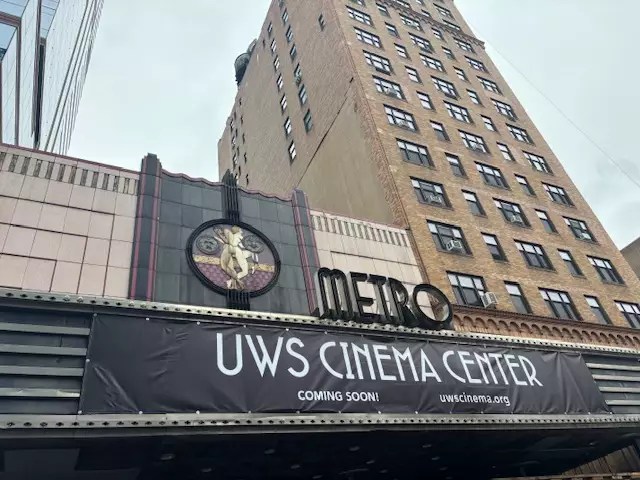The former Metro Theater, once a staple of cinematic culture on Broadway at 99th Street, is poised to undergo a monumental transformation. With the emergence of the Upper West Side Cinema Center, the theater, which has languished in neglect for nearly two decades, is on the brink of revival. The collective efforts of the city, state, and notable private donors—including the Hearthland Foundation backed by Kate Capshaw and Steven Spielberg—have collectively pooled $6.9 million to secure this vital cultural venue. This project represents not just a financial investment but a commitment to restoring the essence of a neighborhood that has felt increasingly abandoned in regard to its cinematic offerings.
A Community’s Longing for Art Cinema
In the wake of the Lincoln Plaza Cinema’s closing, the Upper West Side has faced an undeniable vacuum of artistic representation. Ira Deutchman, producer and co-founder of the Upper West Side Cinema Center, aptly describes this initiative as a lifeline for a community starved of quality film experiences. He articulates a clear vision for the theater: to showcase a diverse catalog of movie classics, foreign films, and thought-provoking documentaries—all under one roof. The inclusion of an education center and a street-facing café is integral to the theater’s mission to engage not just film enthusiasts but the entire community. It’s an insightful fusion of culture and social interaction, which is precisely what the Upper West Side desperately needs.
Celebrity Backing: A Signal of Cultural Urgency
The project has garnered unprecedented support from esteemed figures in the film industry, including the likes of Martin Scorsese and Frances McDormand. Such endorsements do more than elevate the visibility of the project; they signify a deep-rooted belief among influential artists that the theater can revive the communal aspect of film watching—a practice that has waned in the age of streaming dominance. This solidarity among filmmakers sends an urgent message: cinema is a communal experience that rewards us all, and to let these spaces disappear is to lose more than simply brick and mortar; it is to lose the shared narratives that weave communities together.
Bridging Generational and Cultural Gaps
Among the most compelling aspects of this renovation is its potential to bridge generational and cultural divides. As Deutchman eloquently notes, the historic venue once served as a focal point for cultural discourse, where diverse narratives emerged and were celebrated. In a society increasingly defined by isolation and fragmentation, the need for spaces that foster dialogue and connection has never been so critical. The new theater will thrive as a gathering place—a venue not only for viewing films but also for community engagement and conversation around the stories that shape our lives.
Challenges Ahead: A Financial Journey
While excitement surrounds the prospective opening of the theater, there are still significant hurdles to overcome. The anticipated costs for fully restoring and revamping the space range from $15 million to $22 million—a daunting figure by anyone’s measure. Securing additional funding, especially in a post-pandemic world, presents a challenge that cannot be understated. However, Deutchman’s optimism is contagious. He recognizes that what this project represents transcends mere economic transactions; it’s a commitment to the revival of a community that has long been overlooked.
Political Will and Community Investment
Political backing has also been significant in this endeavor, with New York State providing crucial grants. Governor Kathy Hochul and Assemblymember Micah Lasher’s eagerness to see this project through speaks to the desire for cultural growth within the community. It is telling that these leaders view the revival of the Metro Theater as a public good—one that not only serves the arts but also enhances community cohesion. This type of political will, when harnessed effectively, can catalyze transformative change within neighborhoods, encouraging other similar projects to flourish.
A Call to Action for the Future of Cinema
As the Upper West Side Cinema Center gears up for the next phases of its campaign, the conversation around the future of cinema remains pressing. It is imperative for art lovers, local residents, and institutions alike to rally around this initiative. The revival of the Metro Theater is not merely an end in itself; it acts as a catalyst—a chance to reconsider what communal spaces can achieve in the cultural landscape of New York City. The project signals a renaissance, breathing new life into a community that has weathered the storm but is now ready to embrace a shared artistic future.


Leave a Reply